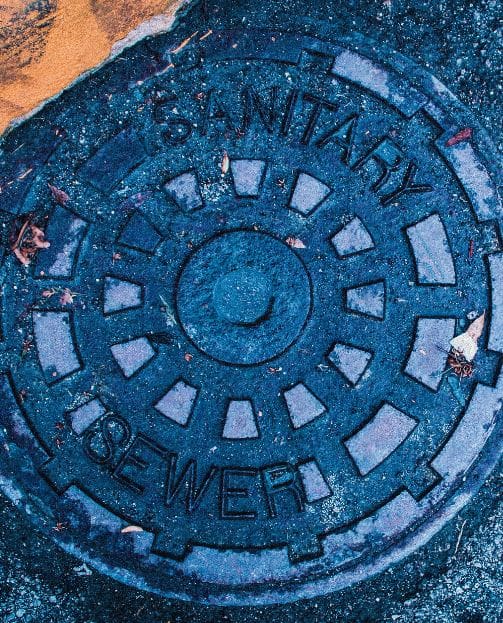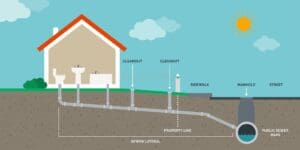
Water damage comes in many forms: pipes burst, appliances overflow, roofs leak, plumbing freezes, the list goes on. These situations will probably incur some degree of damage to a home and/or the personal property within a home. For this reason, it is important to know what kind of water damage coverage is included in your homeowners insurance policy. To ensure your home is properly covered against water damage-related perils, it is often necessary to purchase add-on coverages.
What is water backup coverage?
Water backup coverage is for water damage to a home that results from a backed-up sewer, drain, or sump pump. This coverage is not included in most standard homeowners insurance policies but can be added on. Water backup coverage limits and deductibles vary from policy to policy.
Why do I need water backup coverage?
As a homeowner, you are responsible for maintaining the sewer lines between the city’s sanitary main and your home. This area is known as the sewer lateral, as shown in the graphic below.
According to the Civil Engineering Research Foundation, the number of backed-up sewers increases by about 3% each year. Yikes! Some of the common causes of backed-up sewers include deterioration over time (on average, sewer systems are about 30 years old), tree roots that cause damage to sewer lines, sanitary main blockages, and pipelines that combine stormwater and sewage.
Backed-up sewers can be a problem for anyone, no matter where you live. If you decide to go without this add-on coverage, you are taking a risk. It can get quite pricey to pay for water removal, sanitation, floor cleaning/replacement, electrical repairs, and personal property replacement if this happens to you.
What can I do to minimize my risk?
Luckily, there are some things you can do to help keep your sewer lines flowing properly. The Insurance Information Institute gives some great suggestions, including:
- Do not put grease down the drain- it will solidify later on and cause blockages in the sewage system. Instead, you should pour grease into a container until it cools off, then throw it away in the trash.
- Properly dispose of paper products such as feminine hygiene products, paper towels, and diapers. Do not flush them!
- If you have trees on your property, have a professional cut back the roots occasionally.
- Disconnect your sanitary sewer from French drains, sump pumps, or other flood control systems. (It is also illegal to have these types of connections).
- Consider installing a backwater prevention valve so sewage can only go out and not back in.
Even if you take all these precautions, there are always factors outside your control. Therefore, we recommend adding water backup coverage to any homeowners policy.
What kind of water damage is included in a standard homeowners policy?
If water damage occurs suddenly and accidentally, a standard homeowners insurance policy will usually cover it. An example of this would be a washing machine supply hose breaking and water leaking everywhere. An insurance adjuster will determine whether or not the peril is covered.
Do you have additional questions?
If you have more questions about water backup coverage or want to add it to your policy, give us a call at 702-932-3105. We can also help you determine how much water backup coverage you need.

